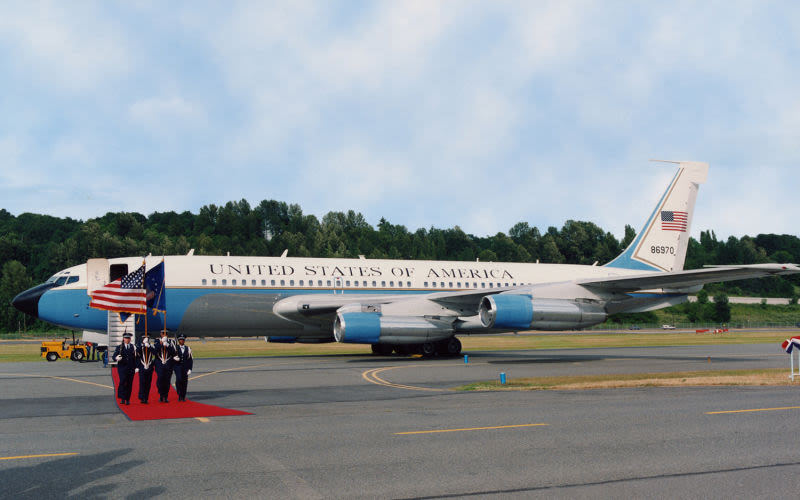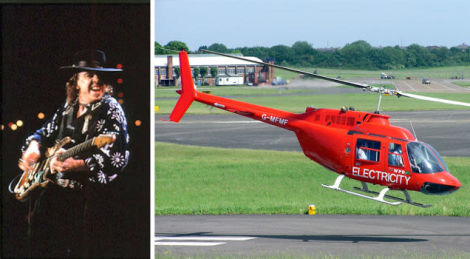Welcome to This Date in Aviation History, getting of you caught up on milestones, important historical events and people in aviation from August 26 through August 28.

August 26, 1959 – The first VC-137 enters service. In 1943, President Franklin Delano Roosevelt became the first US President to fly on an airplane, a Boeing 314 flying boat named the Yankee Clipper, for official government business when he traveled to Casablanca on the Moroccan coast for a war strategy meeting with British Prime Minister Winston Churchill. In 1945, when Roosevelt went to the Yalta Conference, he flew in a Douglas VC-54C Skymaster named the Flying White House but popularly known as Sacred Cow, the first purpose-built presidential aircraft. His successor, President Harry S. Truman, used a Douglas DC-6 named Independence. President Dwight Eisenhower then flew in two different Lockheed VC-121 Constellations named Columbine II and Columbine III.
But with the arrival of America’s first jet airliner in 1958, the Boeing 707, the Air Force decided that it was time for the President to transition to a jet-powered transport. That year, the Air Force accepted its first 707, dubbed the VC-137A, and it was given the designation Special Air Mission (SAM) 970 based on its serial number (59-6970A). Two more 707s were then added and were given the designations SAM 971 and SAM 972.
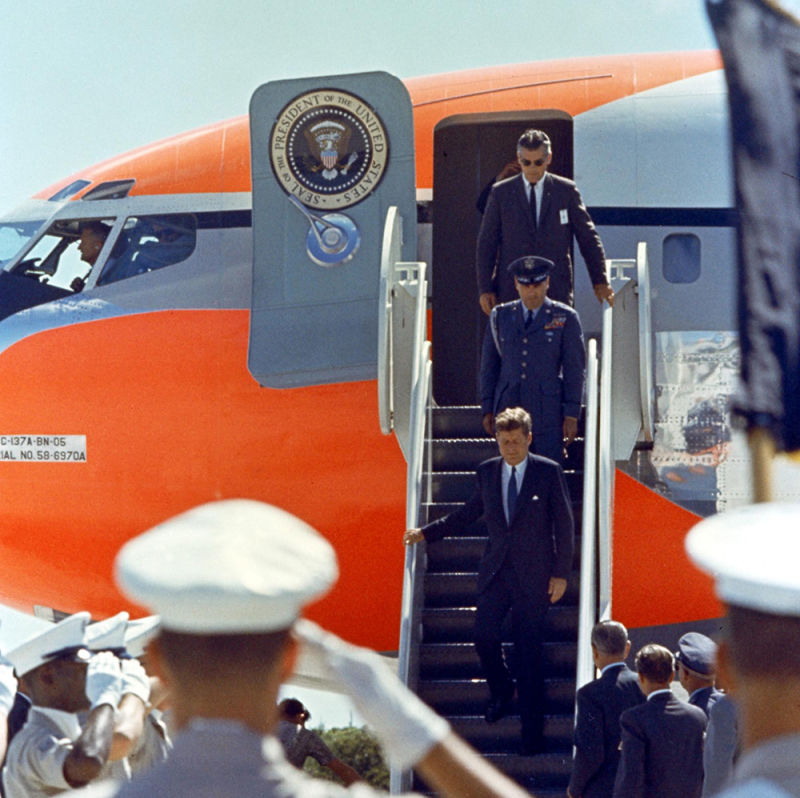
The new aircraft featured living and working spaces for the president and his staff, as well as modern communications equipment. President Eisenhower was the first US President to fly in the new airliner when he visited 11 Asian nations during his “Flight to Peace” goodwill tour in 1959. But the SAM jets used by Eisenhower, and briefly by his successor, John F. Kennedy, looked nothing like the iconic blue and white jets we see today. The original 707s featured a rather gaudy, bright red-orange nose and bright orange tail stripe. It wasn’t until the next generation of Boeing C-137 Stratoliners purchased for President Kennedy that the airliners were decked out in the famous blue, white, and silver livery designed by Raymond Loewy.
SAM 970 served Presidents Eisenhower, Kennedy, and Lyndon Johnson and, after the original SAM 970 was replaced in 1962 by two newer VC-137Cs (SAM 26000 and SAM 27000), the executive transport continued flying VIPs and the Vice President until 1996. The last executive passenger to fly the VC-137 was Vice President Al Gore. SAM 970 is preserved and is on display at the Museum of Flight in Seattle, Washington, while SAM 971, a V137B, resides at the Pima Air and Space Museum in Arizona. SAM 972 was scrapped in 1996.

August 27, 1990 – The first flight of the Northrop YF-23. In war, control of the airspace over the battlefield is of paramount importance. By the 1980s, the US Air Force needed to counter the latest generation of Russian fighters such as the Sukhoi Su-27 and Mikoyan Gurevich MiG-29. To ensure their advantage in the future, the Air Force issued requirements for a new air superiority fighter that would take advantage of developments in cutting-edge construction materials, engines that could provide super cruise, and vectored thrust. But perhaps most importantly, the new fighters would include the latest developments in stealth technology that were first demonstrated brilliantly by the Lockheed F-117 Nighthawk. While stealth doesn’t make an aircraft invisible, it does reduce its radar signature so that it can be difficult to detect against the background clutter of the radar screen.
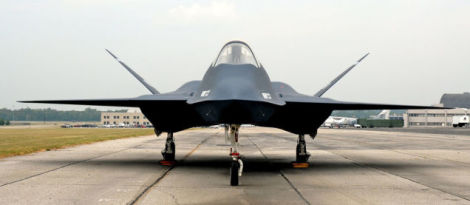
In 1981, the year that the F-117 took its maiden flight (though designated as a fighter, the Nighthawk is truly a tactical bomber), the Air Force initiated its Advanced Tactical Fighter (ATF) program to find a replacement for the McDonnell Douglas F-15 Eagle in the air superiority role. Two groups of manufacturers—Lockheed/Boeing/General Dynamics and Northrop/McDonnell Douglas—paired with Pratt & Whitney and General Electric to produce two prototype aircraft each. The Lockheed-led group proposed the YF-22, which incorporated stealth capability along with thrust-vectoring engines for increased maneuverability. The Northrop-led group offered the YF-23 Black Widow II (the second prototype was dubbed Gray Ghost due to its lighter paint scheme). The Northrop proposal placed greater emphasis on stealthy design but saved weight and complexity by eliminating thrust-vectoring. The YF-23 also made extensive use of the area rule to reduce drag at transonic speeds. The first YF-23 was powered by a pair of Pratt & Whitney YF119 afterburning turbofans, while the second received General Electric YF120 engines. To increase the stealthiness of the fighter, the exhaust from the engines was routed through troughs lined with materials to reduce the aircraft’s heat signature.
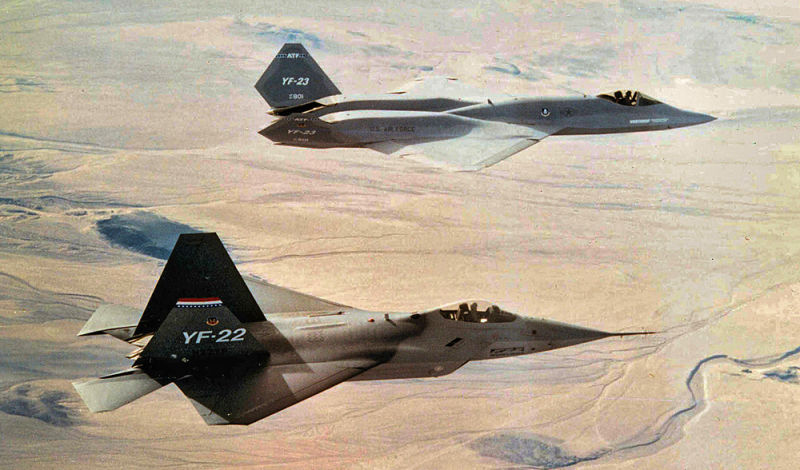
Both aircraft underwent four years of testing and competition, during which the YF-23 proved to be stealthier and faster than the YF-22. However, the YF-22, with its vectored thrust, proved to be more agile. On April 23, 1991, the Air Force announced that the Lockheed design was the winner, and the YF-22 entered production as the F-22 Raptor in 1996. Both YF-23 prototypes were sent to NASA for use as test beds, but they were never flown again. Some consideration was given to having Northrop develop a carrier-based version of the YF-23 for the US Navy, or an interim bomber version for the Air Force, but those plans never came to fruition. The first prototype is now housed at the National Museum of the United States Air Force in Ohio, and the second is on display at the Western Museum of Flight in California.
Short Takeoff
August 26, 2012 – Ron Akana retires as the longest-serving flight attendant in history. Born in 1928 in Honolulu, Hawai’i, Akana responded to an advertisement placed by United Airlines in 1949 to fill a steward position. A college student at the time, Akana said that his main reason for joining United was the opportunity to fly to the mainland. His first flight, on a Boeing 377 Stratocruiser, began a 63-year run of service, with only a two-year interruption from 1950-1951 to serve in the military during the Korean War. When Akana retired following a flight from Denver to Kauai after spending his entire career with United, he had logged 200 million airmiles and crossed the Pacific Ocean 10,000 times.
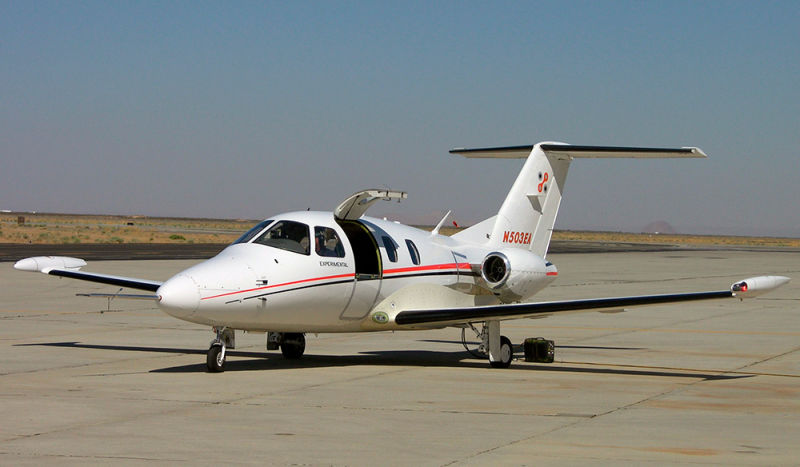
August 26, 2002 – The first flight of the Eclipse 500, a small, six-seat business jet and the first in a new class of Very Light Jet (VLJ). Previously called microjets, VLJs are approved for single-pilot operation and seat four to eight passengers with a maximum take-off weight (MTOW) of under 10,000 pounds. The Eclipse 500 is based on the Williams V-Jet II which was designed by Burt Rutan and is powered by a pair of Pratt & Whitney Canada PW610F turbofans that give it a maximum speed of 425 mph and a range of nearly 1,300 miles. Eclipse Aviation entered bankruptcy in 2008 due to a lack of funding, and production stopped at 560 aircraft. After liquidation, Eclipse Aerospace took over, and development of a more advanced Eclipse 550 is underway.
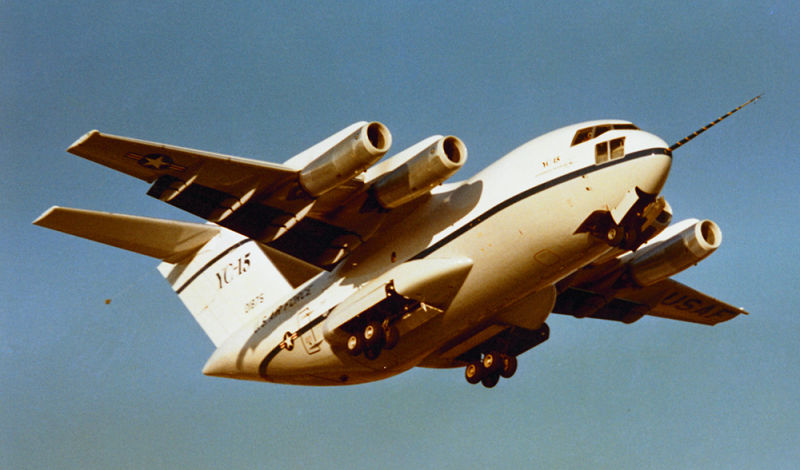
August 26, 1975 – The first flight of the McDonnell Douglas YC-15, an unsuccessful entrant into the US Air Force competition to procure a jet-powered replacement for the Lockheed C-130 Hercules. McDonnell Douglas competed against the Boeing YC-14 for the Air Force contract, but neither aircraft was selected. The YC-15 featured advances such as a supercritical wing to reduce drag and increase lift, along with externally blown flaps to improve low-speed performance. Only two YC-15 prototypes were built and, while it failed to enter production, many elements of its design served as the basis for the Boeing C-17 Globemaster III following McDonnell Douglas’ merger with Boeing in 1997.
August 27, 1990 – Blues guitatist Stevie Ray Vaughan dies in a helicopter crash. Following a performance with Eric Clapton in East Troy, Wisconsin, Vaughan and members of his band boarded four helicopters to take them to Chicago’s Meigs Field. Accompanied by three members of Clapton’s entourage, Vaughan boarded a Bell 206B JetRanger, and the pilot took off despite haze, fog, and low clouds in the area. The flight path required the pilot to fly over a 1,000-foot high ski hill, but the helicopter struck the hill approximately 50 feet from the summit, killing all on board. The National Transportation Safety Board cited pilot error as the cause of the crash, and listed weather conditions as a contributing factor.

August 27, 1940 – The first flight of the Caproni Campini N.1, an experimental aircraft powered by a mortorjet, a precursor to the modern jet engine. The N.1 was incorrectly credited by the Fédération Aéronautique Internationale (FAI) as the first jet-powered aircraft to take flight, as news of an earlier flight by the Heinkel He 178 had not been widely reported. However, the N.1 was not a true jet, as it used a traditional aircraft engine to turn the compressor in an arrangement Caproni called a “thermojet.” Two prototypes were built, and one is on display at the Italian Air Force Museum near Rome.

August 27, 1939 – The first flight of the Heinkel He 178, the world’s first practical turbojet-powered aircraft. First demonstrated in 1937, the engine was developed by Hans von Ohain at the same time as, but separate from, work being done in England by Frank Whittle. Heinkel received little support from the German Air Ministry for his private venture, as the government was more focused on development of traditional piston engines being made by BMW and Junkers. The He 178 featured a metal fuselage with high-mounted wooden wings and retractable landing gear, though the gear remained fixed during test flights. Despite the promise of the new powerplant, only one airframe was built by Heinkel, and it was destroyed in an Allied air raid in 1943.
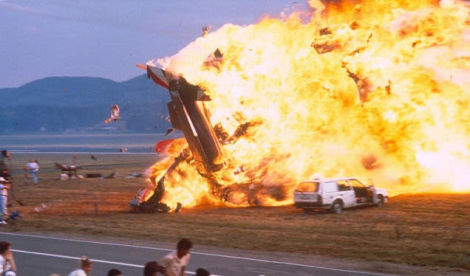
August 28, 1988 – Three aircraft from the Italian Air Force demonstration team Frecce Tricolori collide during an air show at Ramstein Air Force Base. During the Flugtag 88 air show, ten Italian Aermacchi MB-399 PAN trainer aircraft were performing a “pierced heart” maneuver in which two crossing groups of aircraft are split by a single aircraft flying a perpendicular course towards the crowd. As the planes crossed, the solo aircraft struck two others in the formation, raining debris and burning fuel onto the audience below. Sixty-seven spectators were killed, along with the three Italian pilots, while 346 were injured. Germany declared a three-year moratorium on public air shows, and new rules were put in place that required greater viewing distances. Also, maneuvers that were directed towards the crowd were banned.
Connecting Flights
If you enjoy these Aviation History posts, please let me know in the comments. You can find more posts about aviation history, aviators, and aviation oddities at Wingspan.
